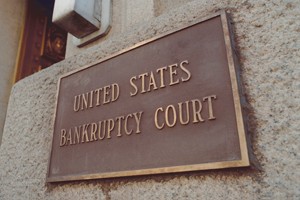Why think about the future?
Coasting is fun. One of my favorite winter activities here in Vermont is cross-country skiing. Cross-country skiing is a great way to enjoy the peacefulness and beauty of snow-filled woods and to get some serious exercise. Coasting is one of the perks of cross-country skiing. The best part of a coast is the beginning, at the onset of the relief from climbing as you start flying downhill, a smile plastered to your face. But coasting is short-lived. To make the best use of a coast, you have to plan on the next hill and any perils that lie at the bottom of the current one.
It is true that planning your next hill or preparing for a stick or slush pile at the bottom your cruise does put a slight damper on the enjoyment of the current coast. Without the investment, however, it could very well be your last coast. This analogy works so well for almost any business scenario. No successful provider of goods and services can simply coast during the good times. Change is inevitable.
As mentioned in previous y-blawg posts, the practice of bankruptcy law is extremely humbling. Hearing countless stories of unanticipated misfortune and loss serves as a reminder that bad things happen to good people. Obviously, some of the greatest losses cannot be anticipated and cannot always be remedied by planning. However, in our practice we certainly encounter business failures that could have been avoided.
There is something reassuring about having a succession plan, alternate strategies or even just an awareness of the types of changes that may come calling. Business owners must strive to outthink their competition and anticipate trends to remain successful. Businesses and individuals alike should save and/or invest in software or technology during profitable times to prepare for the more lean times. Providers of goods and services have to think about the longevity of the product or service they currently offer.
Being on the Vermont Bar Association Board of Managers, I get to spend a substantial amount of time thinking about the future. Generally, the most effective board will spend much of its time spotting trends and opportunities and not micromanaging the organization it serves. It is no doubt that the Vermont Bar Association is a competently-run, successful organization, which, by its successful nature, must work hard to consciously avoid coasting. As with any organization, during good times, it is difficult to be the harbinger of change, because of the effortless gratification that coasting brings.
One current focus for the VBA Board, under a charge from Chief Justice Paul Reiber, is a study on the future of legal services in Vermont. Under the direction of our immediate past president Dan Richardson, the commission has been looking into four areas of concern being the future of education, court process, legal services and technology. The age-old profession of lawyering has changed so rapidly in recent decades. We have gone way beyond solving problems with “because we have always done it this way.” Lawyers have to be mindful of the competition they are facing from online and overseas, the rapid and technology-driven demands of our clients, the need to offer value-based and economical services while identifying what truly requires their full legal expertise, and the importance of technological competence. The commission hopes to come forward with recommendations to improve the practice of law and court processes in Vermont as the VBA strives to help lawyers help people.
Every organization, large or small, should set aside time annually, quarterly or even monthly thinking about the future. A valuable futures exercise is the SWOT analysis method where participants make a list of all the strengths, weaknesses,opportunities and threats with respect to their business or trade. At the very least this exercise gets people thinking about the future, but the exercise has the potential to accomplish much more. Almost every weakness has a complimentary strength and almost every threat has a complimentary opportunity that can be discovered if given enough attention and energy. The ideas generated in this type of brainstorming session will likely fit well into the strategic plan of the organization or business.
With the strategic plan in place and threats identified, you can increase the likelihood that there will be much more coasting to come. While blind coasting can be exciting, it is much more gratifying to know that there will be countless coasts in your future, even if, given this winter in Vermont, it may require the invention of hover or snow making cross-country skis.





